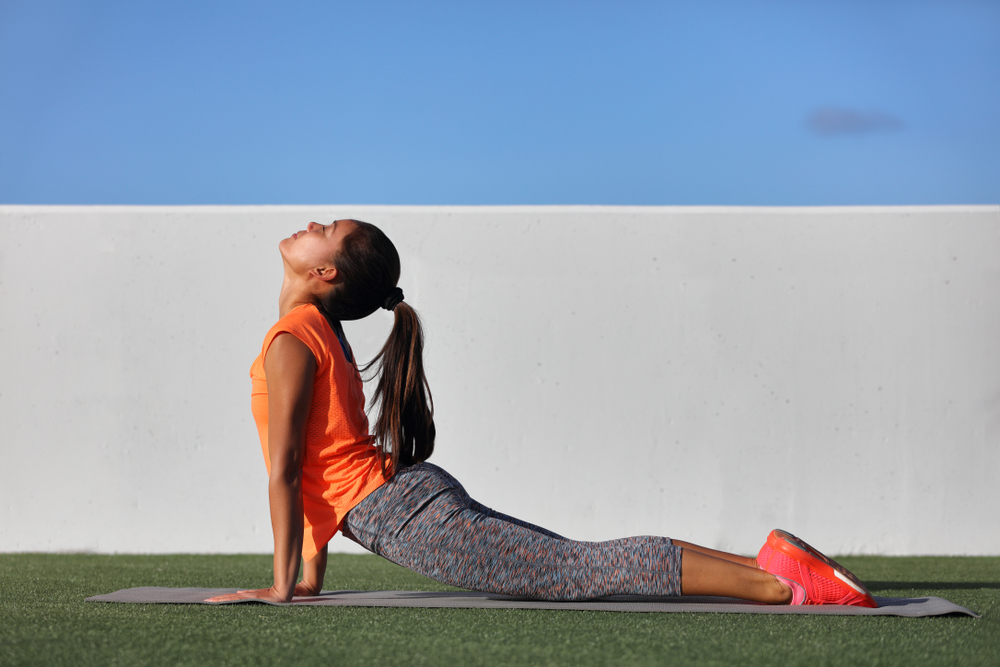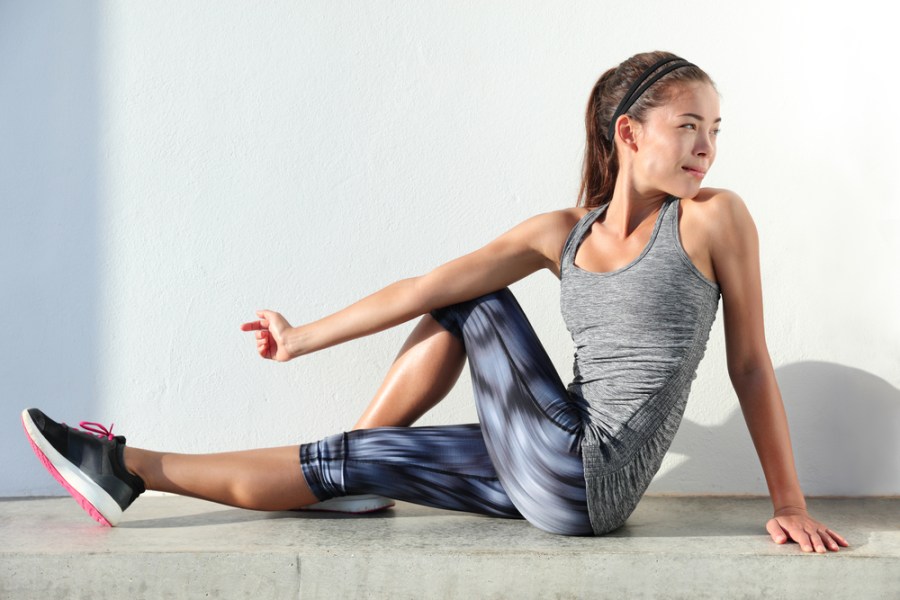Running is a great way to burn calories and get fit but any tight or sore muscles can cause restrictions and discomfort when you do it. Yoga teacher Eve Boggenpoel recommends yoga for runners and looks at the most suitable forms of yoga.
Whether you pound the pavements, take to the trails or prefer the control and predictability of a treadmill, yoga is the perfect cross-training workout for runners. It increases flexibility, improves balance, reduces your risk of injury and, of course, releases tight muscles. In fact, yoga benefits your whole body, starting from the ground upwards.
When you run, your feet and ankles absorb at least three times your body weight with each step. Make any sudden change to your training, such as upping your mileage too quickly, and you’ll place even more stress on your feet. However, by improving your balance, your feet will be better able to absorb the impact, reducing your risk of injury in the process. Yoga can help your feet in other ways, too. Postures that stretch your arches (try Hero pose, with your toes tucked under), will keep feet super flexible and help prevent plantar fasciitis.
Sore knees
Your knees will also benefit from regular yoga sessions. Runner’s knee is often caused by tight glutes (a common occurrence after running, especially if you’ve been doing lots of hill or speed work) but easing them out after a session can reduce your risk of knee pain. Your glutes, along with your hip adductors, are also crucial for pelvic stability and propelling you forwards as you run, but postures such as Bound angle pose and wide-legged seated forward fold will help lengthen your adductors, while Pigeon (see below) is a great way to ease tight glutes.
Tight hip flexors
Another hip muscle group, the hip flexors, will also appreciate the time spent on your yoga mat. Your hip flexors contract every time you lift your knee to take a step but, unchecked, this can mean you end up taking shorter, unbalanced strides and increase your risk of injury. Stretching them out with poses such as Crescent and Lizard will help to lengthen them. Add to this the benefits of better breathing and the increased focus and mindfulness that yoga can bring, and you can see why it’s a great addition to your running tool kit.

While individual poses will go a long way to supporting your running, the structure of a regular yoga class (streamed or in-person) will balance out your body and ensure you gain maximum benefits. Not sure where to begin? Here’s a quick guide to the best yoga styles for running…
Yin
This slow form of yoga is ideal if you’ve overtrained, are working with an injury or want to work deeply with your flexibility. The postures are all seated or lying on your mat, and held for several minutes, increasing the range of motion in your joints and helping to release muscles and fascia, the connective tissue that surrounds your muscles.
Iyengar
Ideal for building muscle tone while developing focus and concentration, classes include standing poses and inversions as well as seated and supine moves, each held for five-to-10 breaths. There’s a strong focus on alignment, and props are used to help you experience the benefits of the pose even if you don’t have the flexibility for the full posture.
Vinyasa flow
If you prefer fast-paced workouts, vinyasa will tick all the boxes. Postures flow from one to the next with no break in between and feel like a high-intensity workout. The sessions will heat your body, boost your energy and build strength, especially core stability, and develop your stamina.







